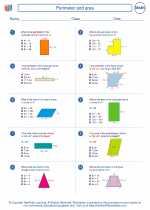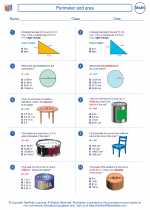Regular Patterns Study Guide
1. Identifying Regular Patterns
To identify a regular pattern, look for a consistent repetition or sequence in the given data. This could be a sequence of numbers, shapes, colors, or any other elements that repeat in a predictable manner.
2. Describing the Rule
Once you have identified a regular pattern, try to describe the rule or relationship that governs the pattern. This may involve identifying the step-by-step changes that occur from one element of the pattern to the next.
3. Number Patterns
Number patterns are a common type of regular pattern. These can include arithmetic sequences, geometric sequences, and other types of numerical progressions. Look for the differences or ratios between consecutive numbers to determine the pattern's rule.
4. Geometric Patterns
Geometric patterns involve shapes and spatial arrangements. These patterns often involve repeated shapes or designs, and understanding the symmetry, rotation, and reflection properties can help identify the regularity in the pattern.
5. Visual Patterns
Visual patterns encompass a wide range of designs and arrangements. These can include patterns in tessellations, mosaics, and other artistic representations. Look for repeated motifs and symmetries to uncover the regular pattern.
6. Using Algebraic Notation
For number patterns, use algebraic notation to express the general rule. This may involve using variables to represent the position of a term in the sequence and the relationship between consecutive terms.
7. Extending and Predicting Patterns
Once you have identified a regular pattern, try to extend the pattern by predicting future elements. This can help reinforce your understanding of the pattern's rule and structure.
8. Solving Problems
Regular patterns often appear in problem-solving scenarios. Practice solving problems that involve identifying, describing, and extending regular patterns to strengthen your skills in this area.
[Regular Patterns] Related Worksheets and Study Guides:
.◂Math Worksheets and Study Guides Eighth Grade. Perimeter and area

 Worksheet/Answer key
Worksheet/Answer key
 Worksheet/Answer key
Worksheet/Answer key
 Worksheet/Answer key
Worksheet/Answer key
 Worksheet/Answer key
Worksheet/Answer key
